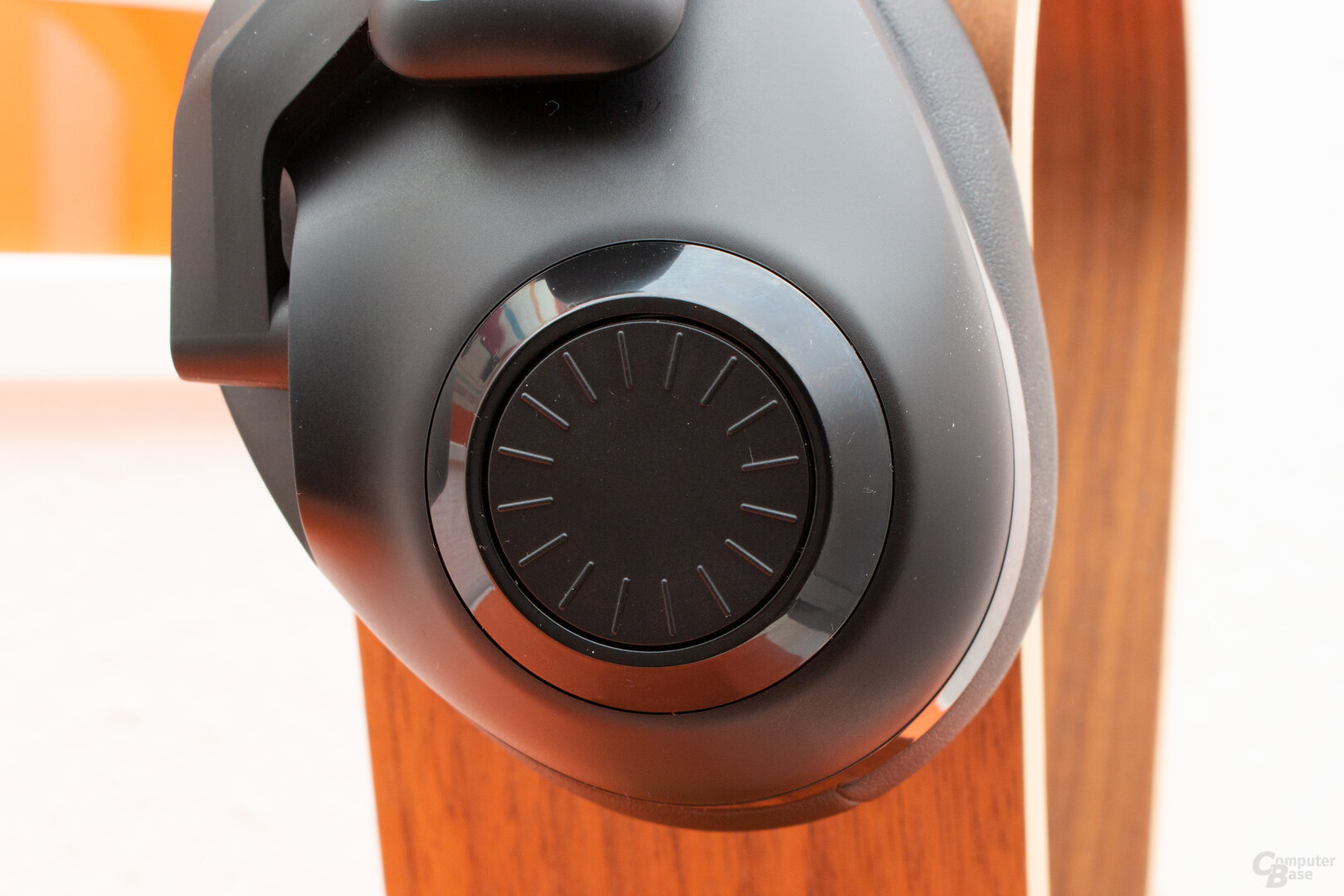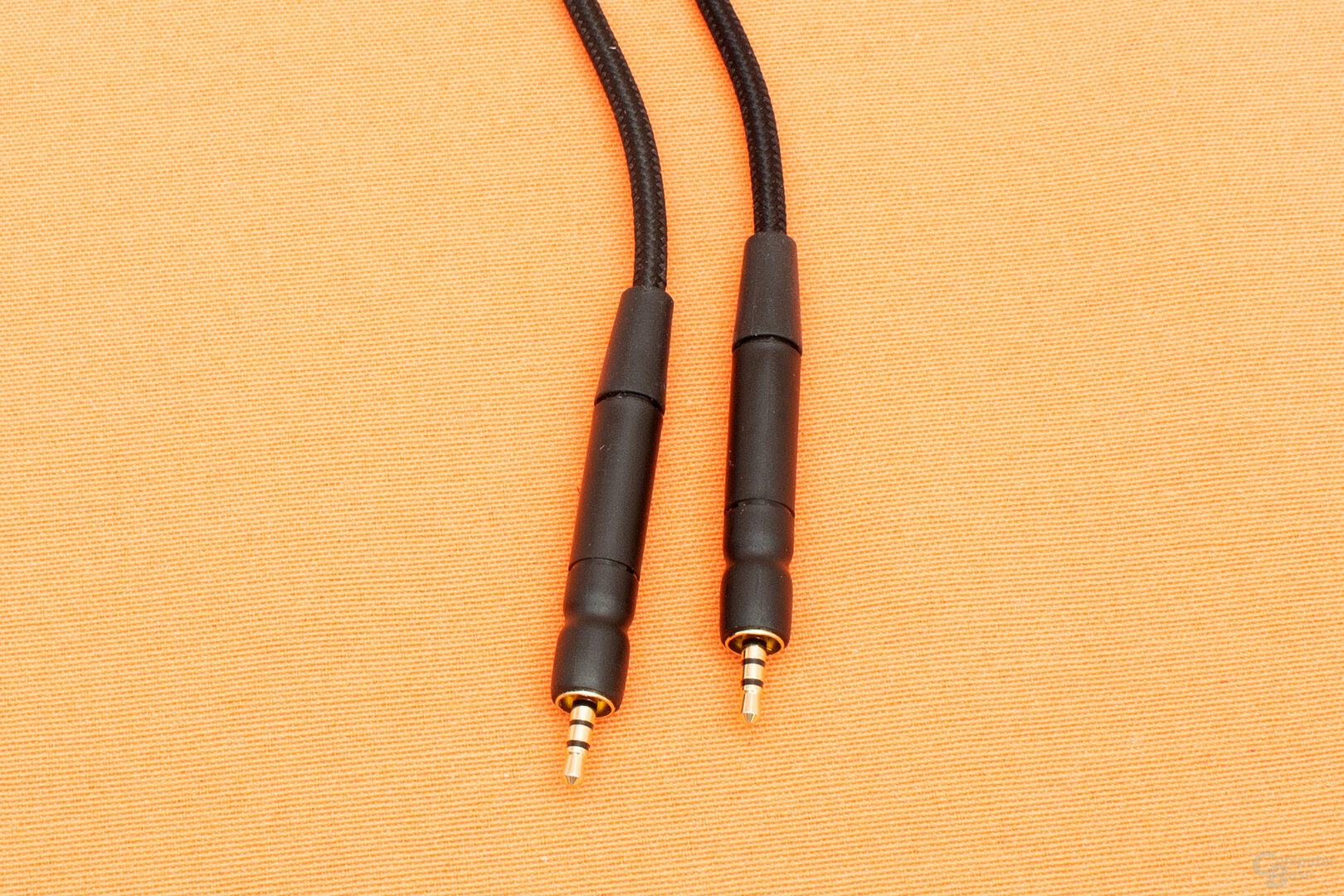The manufacturer Epos, which emerged from the headset division of Sennheiser, is releasing the second series of its headphone-microphone combinations with the H3. For the required price, the H3 should only appeal to a certain group of buyers in terms of sound, but they should also expect more when it comes to the choice of material.
Table of contents
- 1 Expensive headset with a preference for high tones
- Design and workmanship
- Tonal treble
- 2 Microphone quality and conclusion
- Microphone quickly overwhelmed
- Conclusion
Design and processing
For a long time, the headphone specialist Sennheiser and William Demant Holding, a healthcare company from Denmark that also develops hearing aids, ran the joint venture Sennheiser Communications A/S. It ended in 2020 after 16 years and the gaming headset division was transferred to the newly founded company Epos, which however continues to function under the Demant umbrella. It should therefore come as no surprise that the H3 is reminiscent of the Sennheiser headsets of recent years when it comes to design. content/uploads/2021/05/8d962a698737c5d2d662673fa2e8fa36.jpg “/> The H3 from Epos
For the sales price of 120 euros estimated by the manufacturer, the interested buyer receives a headset that initially looks a bit wobbly – but this is mainly due to the suspension of the auricles. The headband made of metal ensures a good and not too tight fit, which is also ensured by the low weight of 267 g. However, sudden violent head movements can cause the headset to slip. The upholstery should have been a bit thicker, you can feel the bracket underneath even with slight pressure.
Epic H3 Roccat ELO X Stereo Mad Catz F.R.E.Q. 4 Fnatic React Lioncast LX55 Turtle Beach Recon Spark Design: Over Ear, closed Driver: Neodymium,? Neodymium, 50 mm neodymium, 53 mm neodymium, 40 mm Connections: 3.5 mm jack, cable detachable from the headset 3.5 mm jack USB 3.5 mm jack Wireless connections: – Headphone frequency range: jack: 10 Hz – 30,000 Hz jack : 20 Hz – 20,000 Hz USB: 20 Hz – 20,000 Hz jack: 20 Hz – 40,000 Hz jack: 20 Hz – 20,000 Hz Running time with wireless connection: – Distance with wireless connection: – Wireless charging: No Controls on the headset: Yes No Yes Cable remote control: No Yes? Yes No Integrated sound card: No Yes No Surround sound: No Yes No Frequency range microphone: Jack: 10 Hz – 18,000 Hz Jack: 100 Hz – 16,000 Hz USB: 50 Hz – 12,000 Hz? Jack: 100 Hz – 10,000 Hz Microphone Properties: can be folded up, can be muted, adjustable, removable, can be muted, adjustable can be folded up, can be muted, can be adjusted and removed, can be muted, adjustable, pop protection can be folded up, can be muted RGB lighting: No Yes No Cooling: – Vibration function: No Weight: 267 g 314 g 320 g 305 g 245 g Price: from 119 € from 46 € 59.99 € 69.99 € 59.95 € 49.99 €
The suspensions of the ear cups are made of plastic, according to the price range, metal could have been expected here as well. They offer adjustment over two axes; At first glance, the range of motion does not appear to be particularly large, but it is sufficient to adapt the mussels well to the ear both vertically and horizontally. The removable cushions themselves are not particularly large and should only completely enclose small ears – and therefore only lie on top for most users. The competition offers more at similar prices. The cushions themselves could have been a bit thicker, as with the headband, but Epos has provided them with fabric on the support surface and synthetic leather only on the side edges.

The microphone of the analog headset can be folded down, but not removed, and can only be positioned in front of the mouth to a limited extent. It can be deactivated automatically by simply flipping it up. The headset also doesn't offer much in terms of connections and controls, which is not surprising given the limited range of functions. For whatever reason, a less common 2.5 mm connector adorns the model, which shows further parallels to Sennheiser. If the cable is defective, the headset cannot continue to be operated with an ordinary jack plug cable, as is usual with other manufacturers, and the deep inlet of the cable on the Epos H3 itself should make it difficult to operate the headset with a plug of the same thickness. Epos includes two connection cables with the H3: one with a normal four-pin jack plug in size 3.5 mm, which is quite short with a length of 1.5 m, and one with separate plugs for headphones and microphone with one length of 2 m.
 The volume control of the H3 is not implemented very well
The volume control of the H3 is not implemented very well Other similarities to the earlier Sennheiser headsets can be seen in the volume control, but while the headphone specialist's version can be turned completely, this headset can only be turned via the inner part. It is also quite stiff, which makes it easy for your fingers to slip off.
The workmanship is generally good, no larger gaps can be seen and the headset appears stable – but a different choice of material can be expected for the asking price.
Tonal heights
According to the manufacturer, the H3 offers a possible frequency response of 10 Hz to 30 kHz. In terms of sound, the model follows the headsets previously published by Sennheiser, which means above all a reproduction dominated by highs and mids. A bass foundation, on the other hand, can hardly be seen. Although it can be added via any increase using the equalizer, the sound image appears less like a unit. Depending on the source, the dominance of the frequency ranges is so strong that the playback seems almost squeaky. Here, too, you have to decide according to your own preferences: If you value good treble reproduction, the H3 could do a good job, but it does not offer balanced and comprehensive sound reproduction.
 The connecting cables of the H3 cannot be easily exchanged
The connecting cables of the H3 cannot be easily exchanged  The cushions of the H3 are partially covered with fabric
The cushions of the H3 are partially covered with fabric The tweeter dominance may therefore still be an advantage in shooters, in which the most important thing is to recognize quiet noises. Battles of epic proportions, on the other hand, are less fun – there is simply no “bang” when tanks or other vehicles drive past you or explosions occur in the immediate vicinity. So it would have been better to provide at least a “normal” bass foundation, which the user could reduce with sound settings if desired – at least several usage scenarios could have been covered in this way. Just grabbing the half as expensive LX 55 from Lioncast (test) shows what would have been possible.
In terms of music, too, the H3 should not be the headphones of choice for many users, even a 25-year-old HD 560 Ovation II from Sennheiser surpasses these in terms of resolution and display Frequency spectrum by far. Although the high frequency reproduction is very present, a convincing stereo image does not want to emerge. The spatial component in combination with the lack of bass reproduction does not allow any real recommendation for relaxed film enjoyment.
On the next page: microphone quality and conclusion


